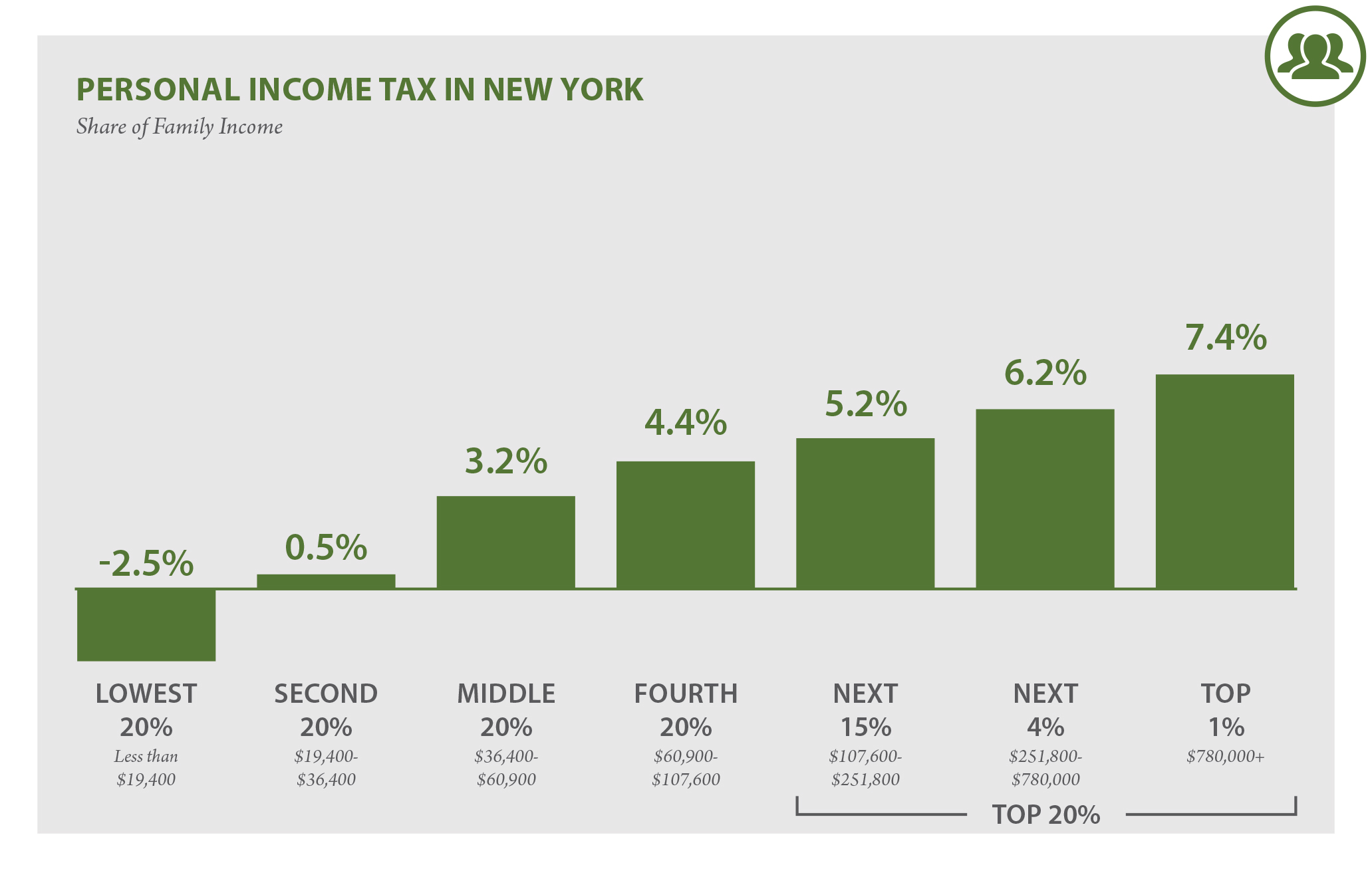New York income tax rates are among the most scrutinized in the United States due to their complexity and impact on residents' finances. As one of the most populous states, New York's tax structure plays a significant role in shaping the financial landscape for individuals and businesses alike. Understanding these rates is essential for anyone seeking to manage their finances effectively or plan for future tax liabilities. With a progressive tax system that adjusts based on income levels, New York's tax rates vary significantly, requiring taxpayers to stay informed about current regulations and potential changes.
Whether you're a long-time resident or new to the state, navigating the intricacies of New York's tax system can be challenging. This guide aims to demystify the process by offering in-depth insights into the state's income tax structure. By exploring key aspects such as tax brackets, deductions, and credits, this article provides actionable information to help you optimize your financial strategy. As you delve into the details, you'll gain a clearer understanding of how New York income tax rates affect your bottom line.
Additionally, staying updated on legislative changes is crucial, as they can directly impact your tax obligations. This article not only outlines the current tax rates but also highlights recent updates and anticipated changes in the near future. By equipping yourself with this knowledge, you can better prepare for tax season and make informed decisions about your financial planning. Let's dive into the specifics of New York income tax rates and uncover valuable tips to maximize your savings.
Read also:Minneapolis Snow Emergency A Comprehensive Guide To Navigating Winter Challenges
What Are the Current New York Income Ta Rates?
The current New York income tax rates follow a progressive system, meaning that higher income levels are subject to increased tax percentages. As of the latest updates, the state employs a range of tax brackets designed to ensure fairness across different income groups. For instance, individuals earning below a certain threshold may face a lower tax rate compared to those in higher brackets. This approach aims to balance the financial burden across the population while generating sufficient revenue for state services.
Understanding the breakdown of these rates is vital for accurate tax calculations. For example, the lowest bracket might apply a rate of 4%, while the highest bracket could reach up to 8.82% for those with substantial income. These percentages are subject to change, so staying informed about legislative updates is essential. Additionally, taxpayers should consider federal tax implications, as they often intersect with state obligations, creating a comprehensive financial picture.
How Do New York Income Ta Rates Compare to Other States?
When comparing New York income tax rates to those of other states, it's important to recognize the unique features that set them apart. While some states adopt flat tax systems, New York's progressive structure reflects its commitment to equitable taxation. This method ensures that individuals with higher earnings contribute proportionally more to the state's coffers. In contrast, states with flat rates impose a uniform percentage regardless of income level, which can result in a less equitable distribution of tax burdens.
Furthermore, New York's rates often fall in the mid-to-high range when benchmarked against other states. This positioning reflects the state's need to fund extensive public services and infrastructure projects. However, residents benefit from various deductions and credits that can offset these higher rates. By leveraging these opportunities, taxpayers can effectively manage their overall tax liability and retain more of their income.
Can You Take Advantage of Deductions Under New York Income Ta Rates?
A key aspect of New York income tax rates involves the availability of deductions, which can significantly reduce your taxable income. Both standard and itemized deductions are available, offering flexibility based on individual circumstances. For example, taxpayers may choose to claim a standard deduction, which simplifies the filing process, or opt for itemized deductions if they qualify for numerous expenses. Common deductions include mortgage interest, charitable contributions, and medical expenses, among others.
Moreover, New York provides specific state-level deductions that complement federal allowances. These include education-related expenses, certain business costs, and contributions to retirement accounts. By carefully evaluating your eligibility for these deductions, you can minimize your taxable income and lower your overall tax burden. It's advisable to consult a tax professional or utilize tax software to ensure you're maximizing these opportunities.
Read also:Braun Silkeacutepil Epilator The Ultimate Guide To Smooth Hairfree Skin
Understanding the Impact of New York Income Ta Rates on Filers
For many taxpayers, understanding the practical implications of New York income tax rates is crucial for effective financial planning. The progressive nature of these rates means that as your income increases, so does your tax liability. However, this system also ensures that lower-income individuals face a more manageable tax burden. By familiarizing yourself with the applicable rates for your income bracket, you can better anticipate your tax obligations and allocate resources accordingly.
Another factor to consider is the interplay between state and federal taxes. While New York imposes its own rates, federal tax brackets also affect your overall liability. Coordinating these two systems requires careful planning, especially for those with complex financial situations. Utilizing tools such as tax calculators or seeking professional advice can help streamline this process and ensure compliance with all regulations.
What Should Taxpayers Know About New York Income Ta Rates?
Taxpayers in New York should be aware of several critical aspects regarding income tax rates to avoid common pitfalls and optimize their returns. One important consideration is the timing of tax filings, as submitting your return by the deadline ensures you avoid penalties and interest charges. Additionally, understanding the differences between estimated taxes and annual filings can prevent unexpected liabilities, particularly for self-employed individuals or those with fluctuating income.
Another key point is the importance of maintaining accurate records throughout the year. Keeping detailed documentation of all income sources and deductible expenses simplifies the filing process and supports any necessary audits or inquiries. Furthermore, staying informed about legislative changes and updates to New York income tax rates allows you to adjust your strategy as needed, ensuring you remain compliant and take full advantage of available benefits.
Who Should Be Concerned About New York Income Ta Rates?
Anyone earning income within the state of New York should be concerned about the state's income tax rates, as they directly impact financial well-being. This includes not only full-time residents but also part-time residents and non-residents who earn income within the state. Each group faces different obligations and requirements, making it essential to understand how the rates apply to their specific situation. For instance, part-time residents may only be taxed on income earned within New York, while non-residents might face limited tax liabilities based on their connection to the state.
Business owners and freelancers operating in New York also need to pay close attention to income tax rates. These individuals often face unique challenges, such as managing multiple income streams or navigating complex deductions. By staying informed about the latest regulations and seeking professional guidance when needed, they can ensure compliance and optimize their financial outcomes.
Why Are New York Income Ta Rates Important for Residents?
New York income tax rates hold significant importance for residents due to their direct impact on disposable income and financial planning. As a major contributor to state revenue, these rates fund essential services such as education, healthcare, and infrastructure, benefiting all residents. Understanding the rates and how they apply to your income allows you to budget effectively and make informed decisions about spending, saving, and investing.
Moreover, being aware of potential changes to the rates enables you to adjust your financial strategies proactively. For example, if an anticipated increase in tax rates is on the horizon, you might consider accelerating certain expenses or deferring income to minimize your liability. By staying engaged with the legislative process and remaining informed about updates, you can better navigate the complexities of New York's tax system.
How Can You Minimize Taxes Under New York Income Ta Rates?
Minimizing taxes under New York income tax rates requires a strategic approach that leverages available deductions, credits, and planning techniques. One effective method is to take full advantage of retirement account contributions, such as IRAs or 401(k)s, which reduce taxable income while also promoting long-term financial security. Additionally, utilizing education-related credits and deductions can further lower your tax burden, especially if you or your dependents are pursuing higher education.
Another valuable strategy involves timing your income and expenses strategically. For example, you might choose to accelerate deductible expenses into the current tax year or defer income to the following year, depending on your anticipated tax bracket. Consulting with a tax advisor can provide personalized guidance tailored to your specific circumstances, ensuring you maximize savings and compliance.
Table of Contents
- What Are the Current New York Income Ta Rates?
- How Do New York Income Ta Rates Compare to Other States?
- Can You Take Advantage of Deductions Under New York Income Ta Rates?
- Understanding the Impact of New York Income Ta Rates on Filers
- What Should Taxpayers Know About New York Income Ta Rates?
- Who Should Be Concerned About New York Income Ta Rates?
- Why Are New York Income Ta Rates Important for Residents?
- How Can You Minimize Taxes Under New York Income Ta Rates?
- Exploring Credits and Incentives in New York Income Ta Rates
- Conclusion: Staying Informed About New York Income Ta Rates
Exploring Credits and Incentives in New York Income Ta Rates
Beyond deductions, New York income tax rates offer a variety of credits and incentives designed to benefit specific groups or encourage certain behaviors. For example, the state provides child care credits, energy efficiency incentives, and credits for low-income taxpayers. These opportunities can significantly reduce your tax liability while promoting positive outcomes for both individuals and the community.
To fully leverage these benefits, it's important to research and understand the eligibility criteria for each credit. Some may require documentation or specific actions, such as installing energy-efficient appliances or enrolling in approved programs. By staying informed and proactive, you can maximize your savings and contribute to the broader goals of the state's tax policies.
Conclusion: Staying Informed About New York Income Ta Rates
In conclusion, staying informed about New York income tax rates is essential for anyone seeking to manage their finances effectively. By understanding the current rates, comparing them to other states, and exploring available deductions and credits, you can optimize your tax strategy and reduce your overall liability. Additionally, remaining vigilant about legislative changes and updates ensures you remain compliant and take full advantage of emerging opportunities.
As you navigate the complexities of New York's tax system, remember that knowledge is power. By equipping yourself with the necessary information and tools, you can make informed decisions that align with your financial goals. Whether you're a long-time resident or new to the state, taking the time to understand New York income tax rates will pay dividends in the form of savings and peace of mind.


